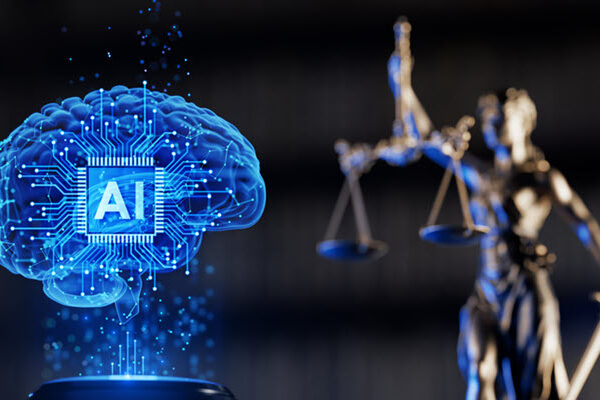AI is revolutionizing our daily lives, reshaping how we work, communicate, and make decisions. From diagnostic tools in healthcare to algorithmic decision-making in finance and law enforcement, AI’s potential is undeniable. Yet, the speed of adoption often outpaces ethical foresight. Unchecked, these systems can reinforce inequality, propagate surveillance, and erode trust. Building ethical AI isn’t just a philosophical debate, it’s an engineering and governance imperative.
Imagine an AI system denying a qualified candidate a job interview because of hidden biases in its training data. As AI becomes integral to decision-making processes, ensuring ethical implementation is no longer optional, it’s imperative.
What is AI Ethics?
AI ethics refers to a multidisciplinary framework of principles, models, and protocols aimed at minimizing harm and ensuring human-centric outcomes across the AI lifecycle: data sourcing, model training, deployment, and monitoring.
Core ethical pillars include:
Fairness: AI should not reinforce social biases. This means actively reviewing data for gender, racial, or socioeconomic patterns before it’s used in training, and making adjustments where needed to ensure fair outcomes across all groups.
Transparency: Ensuring AI decision-making processes are understandable. Using interpretable ML tools like SHAP, LIME, or counterfactual explanations can illuminate how models arrive at conclusions.
Accountability: Implementing traceability in model pipelines (using tools like MLflow or Model Cards) and establishing responsible ownership structures.
Privacy: Protecting user privacy by implementing techniques like differential privacy, federated learning, and homomorphic encryption.
Sustainability: Reducing AI’s carbon footprint through greener technologies. Optimizing model architectures for energy efficiency (e.g., distillation, pruning, and low-rank approximations) and utilizing green datacenter solutions. The role of Green AI is growing, as organizations explore energy-efficient algorithms, low-power models for edge computing, and the potential for quantum computing to provide sustainable solutions without compromising model performance.
Fairness: Understanding the Nuances
Fairness in AI is not as straightforward as it may initially appear. It involves navigating complex trade-offs between different fairness metrics, which can sometimes cause conflict. For example, one metric might focus on achieving equal outcomes across different demographic groups, while another might prioritize minimizing the gap between groups’ chances of success. These differing goals can lead to tensions, and deciding which metric to prioritize often depends on the context and values of the organization.
In some cases, achieving fairness in one area may inadvertently reduce fairness in another. For instance, optimizing for equalized odds (ensuring the same true positive and false positive rates across groups) might be at odds with predictive parity (ensuring similar predictive accuracy for each group). Understanding these trade-offs is essential for decision-makers who must align their AI systems with ethical standards while also achieving the desired outcomes.
It’s crucial for AI developers to evaluate the fairness metrics that best match their use case, and regularly revisit these decisions as data evolves. Balancing fairness with other objectives, such as model accuracy, cost efficiency, or speed, requires careful consideration and transparent decision-making.
Why Ethics in AI Matter
AI is being integrated into high-stakes areas like healthcare, finance, law enforcement, and hiring. If ethics are left out of the equation, these systems can quietly reinforce real-world inequalities, without anyone noticing until it’s too late.
Some real-world examples:
- Amazon eliminated an internal recruiting AI when it was found to favor male candidates over female ones.
- The Netherlands’ childcare benefits scandal exposed how algorithmic bias led to thousands of wrongful fraud accusations.
- In 2024, a major financial institution came under fire after its AI loan approval system disproportionately rejected applicants from minority communities.
These examples illustrate the potential for harm when ethical frameworks are neglected.
Key Ethical Challenges in AI
Bias: When Machines Reflect Our Flaws
Algorithms reflect the data they’re trained on, flaws included. If not carefully reviewed, they can amplify harmful stereotypes or exclude entire groups.
Why Transparency Isn’t Optional Anymore
Many AI models are “black boxes,” and it’s hard to tell how or why they make a decision. Lack of transparency undermines trust, especially when decisions are based on unclear or unreliable data.
Accountability Gaps
Determining responsibility for an AI system’s actions, especially in high-stakes scenarios like healthcare or criminal justice, remains a complex issue. Tools and frameworks that track model decisions, such as audit trails, data versioning, and model cards, can provide critical insights and foster accountability.
Privacy Concerns
AI systems are collecting and using personal data very quickly and on a large scale, that raises serious privacy concerns. Especially given that there is limited accountability and transparency around data usage. Users have little to no understanding of how their data is being handled.
Environmental Impact
Training large-scale machine learning models has an energy cost that is substantially high and degrades the environment. Sustainable practices and greener tech are needed.
Strategies for Implementing Ethical and Efficient AI
Organizations should proactively implement ethical practices at all levels of their AI framework:
1. Create Ethical Guidelines for Internal Use
- Develop a comprehensive ethics policy that outlines acceptable AI use cases, decision-making protocols, and review processes.
- Create an AI Ethics Committee to monitor compliance with these guidelines.
2. Diversity in Data and Teams
- Ensure datasets are representative and inclusive.
-
Assemble diverse teams to bring varied perspectives to AI development. Having teams that are diverse in background will help to see ethical blind spots.
3. Embed Ethics into Development
- Considering ethical implications at each stage of AI development.
- Use tools like IBM’s AI Fairness 360 or Google’s What-If Tool to regularly test for bias in models.
4. Lifecycle Governance Models
- Using ModelOps and continuous integration pipelines that support versioning, rollback, and ethical red teaming. Ethics isn’t static, it evolves as data and models do.
5. Stakeholder Education and Engagement
- Build cross-functional literacy about how models impact stakeholders, both inside and outside the organization. Embed these insights into model documentation and UX. Engaging stakeholders in an open-source ethical AI model for feedback can create a more inclusive development process.
6. Engage in Standards and Compliance Frameworks
- Align with IEEE’s Ethically Aligned Design, the OECD AI Principles, and regulatory bodies like NIST and the EU AI Act. Ethics must be interoperable and audit ready.
Forging the Future
Indeed, an ethically responsible approach to AI is both a technical challenge and a societal imperative. By emphasizing fairness, transparency, accountability, and privacy protection, organizations can develop systems that are both trustworthy and aligned with human values. As the forces shaping the future continue to evolve, our responsibility to ensure inclusive and ethical innovation must grow alongside them.
By taking deliberate steps toward responsible implementation today, we can shape a future where AI enhances lives without compromising fundamental rights or values. As AI continues to evolve, it’s our collective responsibility to steer its development ethically.
Ethical AI is a shared responsibility. Developers, businesses, policymakers, and society all play a part. Let’s build AI that prioritizes human values over mere efficiency, ensuring it uplifts and empowers everyone it touches.


Excellent article! It provides a clear and compelling argument for prioritizing ethical considerations alongside innovation in AI.